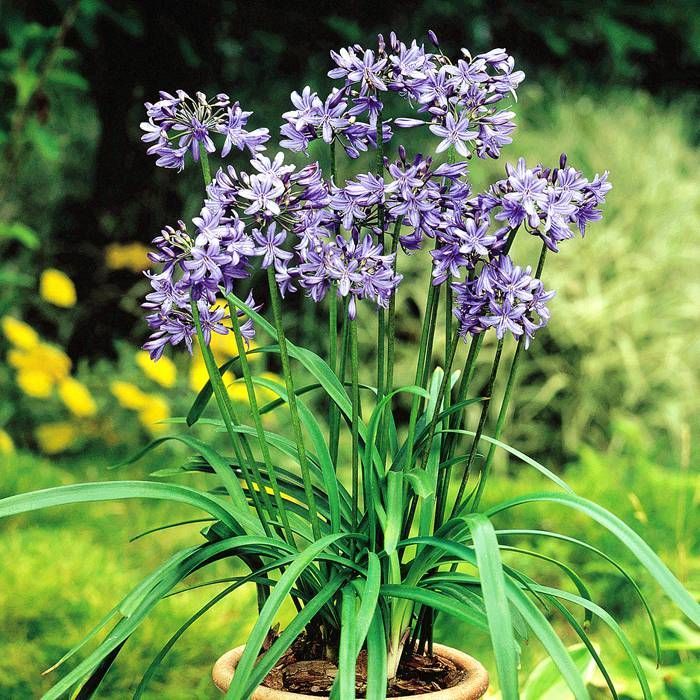Agapanthus Breeding: Tips for Expanding Your Plant Collection
Agapanthus Breeding: Tips for Expanding Your Plant Collection
Blog Article
Mastering the Art of Agapanthus Care: Crucial Steps for Healthy Development and Vibrant Blossoms
In the world of gardening, the cultivation of agapanthus stands as a rewarding endeavor for those that look for to nurture these elegant flowering plants. From selecting the right variety to mastering trimming techniques, the trip towards growing flourishing agapanthus plants is multifaceted and holds the vital to opening the complete potential of these herb treasures.
:max_bytes(150000):strip_icc()/agapanthus-growing-guide-7368912_04-66a3f4cf245b4332b28954dd37c784f5.jpg)
Picking the Right Agapanthus Variety

When selecting the right Agapanthus selection for your garden, take into consideration aspects such as environment viability, flower color, and growth behavior. Agapanthus, commonly referred to as Lily of the Nile or African lily, comes in a selection of colors ranging from tones of blue and purple to white. Choose a bloom color that complements your existing yard scheme to develop a harmonious landscape. In addition, think about the environment in your area to guarantee the Agapanthus variety you select can grow in your particular problems. Some selections are much more forgiving of chilly temperature levels, while others choose warmer climates. Understanding the growth practice of various Agapanthus ranges is important for appropriate placement within your garden. Some selections have a clumping growth habit, suitable for containers or borders, while others have a more dispersing nature, appropriate for ground cover or mass plantings. By very carefully evaluating these elements, you can choose the perfect Agapanthus range to boost the charm of your garden.
Perfect Planting Conditions
Taking into consideration the optimum ecological requirements is necessary for successful Agapanthus farming. Agapanthus prospers in well-draining dirt with a somewhat acidic to neutral pH level. When planting, choose a location that receives complete sunlight to partial color. In hotter climates, offering some afternoon shade can protect against scorching of the fallen leaves. Agapanthus plants are sensitive to chilly temperatures and should be shielded from frost throughout cold weather.
To ensure healthy development and dynamic flowers, plant Agapanthus bulbs at a depth of concerning 2-4 inches and space them 8-12 inches apart. Mulching around the base of the plants helps maintain wetness and subdues weed growth.
Watering and Feeding Tips
Keeping correct wetness levels and offering vital nutrients are crucial elements in the care regimen for Agapanthus plants. It is essential to strike a balance when it comes to sprinkling Agapanthus. If overwatered, these plants choose consistently moist soil but are vulnerable to root rot. During the growing season, water deeply when a week, ensuring the dirt is well-draining to stop waterlogging. In hotter climates or throughout periods of dry spell, even more frequent watering may be needed to maintain the dirt evenly wet. Nevertheless, minimize watering in the winter months to stop water logged conditions.
Feeding Agapanthus is essential for promoting healthy and balanced development and prolific blooms. Apply a well balanced fertilizer, such as a 10-10-10 formula, in the very early spring as new development arises. By complying with these watering and fertilizing suggestions, you can guarantee your Agapanthus plants prosper and produce lively, durable blooms.
Pruning Methods for Agapanthus
Trimming Agapanthus plants at the suitable times and with appropriate techniques is essential for maintaining their wellness and advertising ideal development and flowering. The suitable time to trim Agapanthus is in late winter season or very early springtime prior to brand-new growth emerges.
Deadheading invested flowers can additionally redirect the plant's energy right into generating even more flowers rather than setting seeds. If you desire to collect seeds look these up for breeding, leave some flowers to mature and dry on the plant.
Remember to use clean, sharp devices to make precise cuts and reduce the danger of introducing diseases. Agapanthus. Normal pruning will help keep your Agapanthus looking neat and healthy while making certain an abundant screen of gorgeous blooms
Taking Care Of Usual Pests and Conditions
After making sure correct trimming methods for Agapanthus, it is essential to attend to usual pests and conditions that can influence the wellness and vitality of these plants. One usual bug that influences Agapanthus is the Agapanthus gall midget.
One more common concern is fungal fallen leave area, her latest blog which offers Get More Info as dark lesions on the fallen leaves. To protect against fungal illness, ensure excellent air flow around the plants, prevent overhead watering, and eliminate any contaminated leaves promptly. Furthermore, Agapanthus plants can experience origin rot if they are grown in inadequately draining soil. To prevent this, plant Agapanthus in well-draining dirt and avoid overwatering. By being cautious and taking timely action against parasites and illness, you can assist your Agapanthus plants grow and produce dynamic flowers.

Conclusion
Finally, mastering the art of agapanthus treatment entails selecting the ideal selection, supplying suitable planting problems, appropriate watering and feeding, proper trimming methods, and resolving usual pests and diseases. By following these vital actions, you can ensure healthy growth and vivid blossoms for your agapanthus plants. Remember to on a regular basis keep track of and preserve your plants to advertise their overall health and longevity.
To make certain healthy development and dynamic blooms, plant Agapanthus bulbs at a deepness of about 2-4 inches and room them 8-12 inches apart. By following these watering and feeding suggestions, you can guarantee your Agapanthus plants prosper and create lively, long-lasting flowers.
One usual insect that affects Agapanthus is the Agapanthus gall midget. In addition, Agapanthus plants can endure from origin rot if they are grown in badly draining soil. By adhering to these important actions, you can guarantee healthy development and vibrant flowers for your agapanthus plants.
Report this page